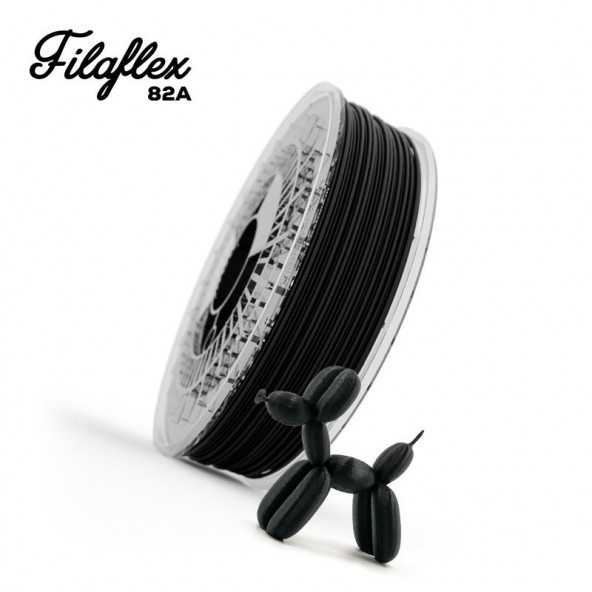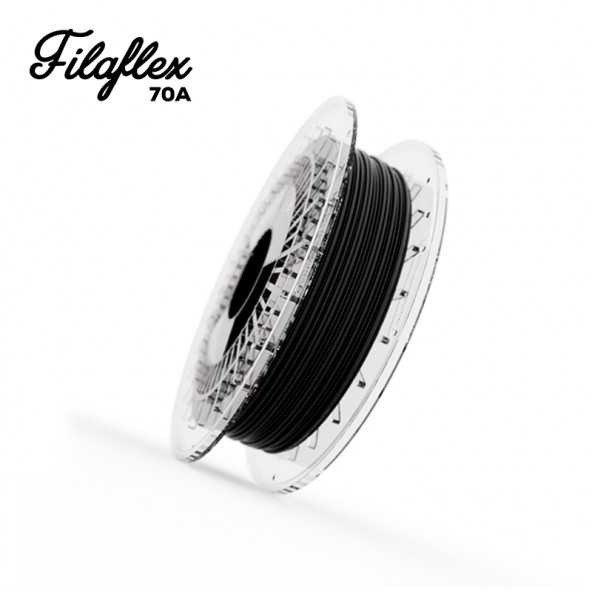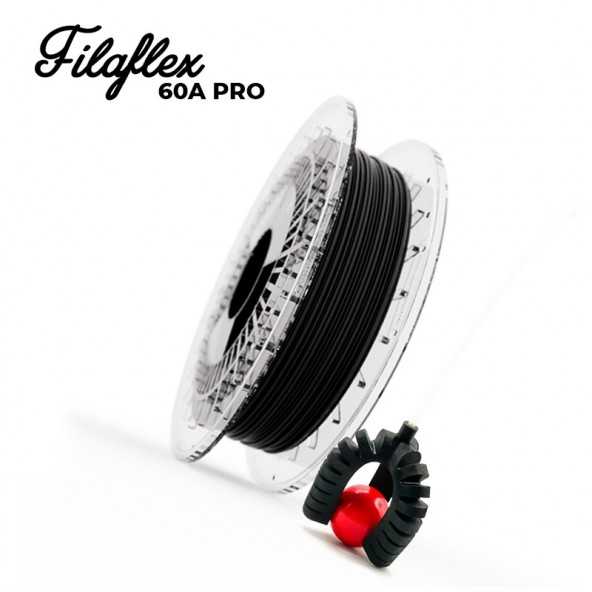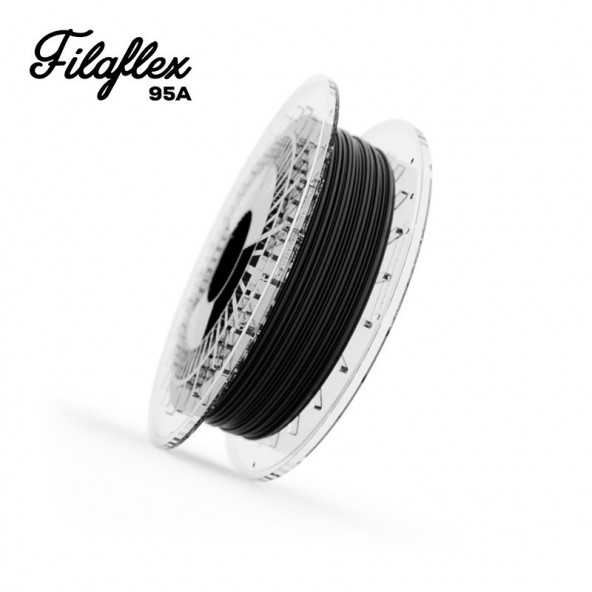Learn how to print in FULL COLOR and in a simple way with Filaflex 82A transparent
Brigitte from VARIABLE SEAMS (before PARAPRINT), teaches us a super simple technique with really incredible results to print your pieces in full color without using different color spools. Don't miss this DIY and discover this creative engineer, 3D printing expert, and printed fashion lover, who you must follow. Let's meet her!
Video: Brigitte Kock explaining the technique to achieve full color 3d printing with Filaflex 82A.

Hi Brigitte! Could you introduce yourself briefly and tell us what you do?
Hi, I’m Brigitte from VARIABLE SEAMS (YouTube) and @variableseams on Instagram & TikTok where I share my 3D printed fashion adventures and tips from discoveries along the way. I like to design modular fashion and experiment with mixed media tools (like sublimation) that push the boundaries of what is possible with a simple 3D printer from home.
How did your passion and interest in 3D printing come about?
My passion started with fashion - a long time ago I convinced my parents that I nééd sewing classes, which turned out to be fashion pattern drawing classes. And thus at 14 I fell in love...surprisingly nót with sewing the designs...but with the mathematics and formulas involved in creating the blueprint for a well-fitting garment. In university, I got the opportunity to work with a 3D printer for the first time and it was just a match made in heaven. The 20x20cm Ultimaker was the perfect size printer to create my first bespoke lingerie! That project set off a fascination for 3D printing that I’m still pursuing 7 years later. What I love most about 3D printing is that the hobby is an even split between technology and fashion, which is what makes it so exciting. On top of that, there is still so much ongoing innovation and the technology leans itself perfectly to enable us towards a more sustainable future.



Images above: Brigitte Kock's custom lingerie project that she carried out at the University. The bra is printed on Filaflex 82A.
Red Bra:
- The pictures have been taken by Remco Nagtzaam and the model is Noa Harder.
- The collaborators on this project are Bart Pruijmboom and Niek van Sleeuwen.
Let's talk about your awesome video, how did the idea of applying this technique to achieve this result come about?
Serendipity in all its beauty. The company that sponsored my participation in the Fabricademy had only one request: that I’d use their sublimation paper in my final project. Before that moment I’d never heard of sublimation, let alone worked with this material. And since it goes without saying that my final project would be 3D-printing fashion, the question became: how can I combine sublimation and 3D printing? The first thought I had is that if sublimation only works on synthetic materials (nylon, polyester, etc), then logically it must transfer onto filament as well. So, I used the iron and transferred a small image to see if my hypothesis was correct, and it was! After that, I printed bigger pieces and used the heat press to transfer the coloured motifs, as this is the same way you’d normally transfer sublimation designs to a t-shirt. As a result, the 3D print would melt in the heat press and turn into a total – albeit colourful – pancake! So, whilst discussing with Troy how the temperatures of sublimation and 3D printing are too close together, all of a sudden he asked: “What if we make use of that?”. The temperatures are so close together, perhaps we can do both at the same time if we print on top of the sublimation paper?! The result of that first experiment was exhilarating! The spiky dress was the final project for the Fabricademy course.
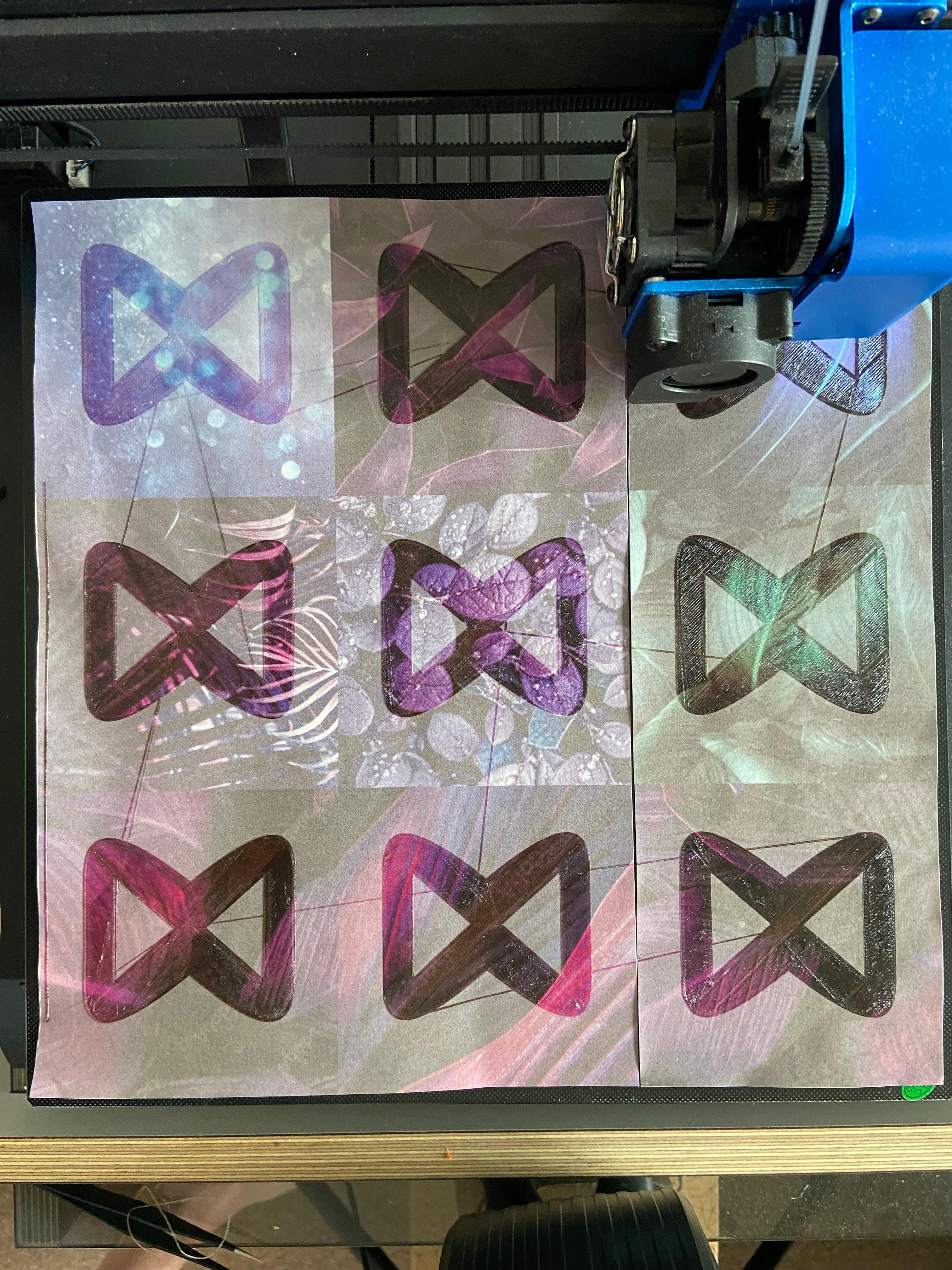
Image above: 'Rainbow' strap being sublimated through the 3D printer using Filaflex 82A flexible filament in transparent color.






Images above: Detail of the parts or different pieces that make up the bag strap printed with Filaflex 82A flexible filament in transparent color. To achieve this colorful gradient, Brigitte has used the sublimation technique that she explains in her video above.


Images above: Detail of the 'Rainbow' strap that has been 3D printed for the bag using the sublimation technique.
Which 'Spiky dress' are you referring to?
The 'Spiky' dress was the final project of the Fabricademy course in 2018 and where for the first time I put into practice the sublimation technique using Filaflex 82A flexible filament in transparent color. In the pictures you can better see the details of how the chosen color and print adhered to the filament using the 3d printing itself.
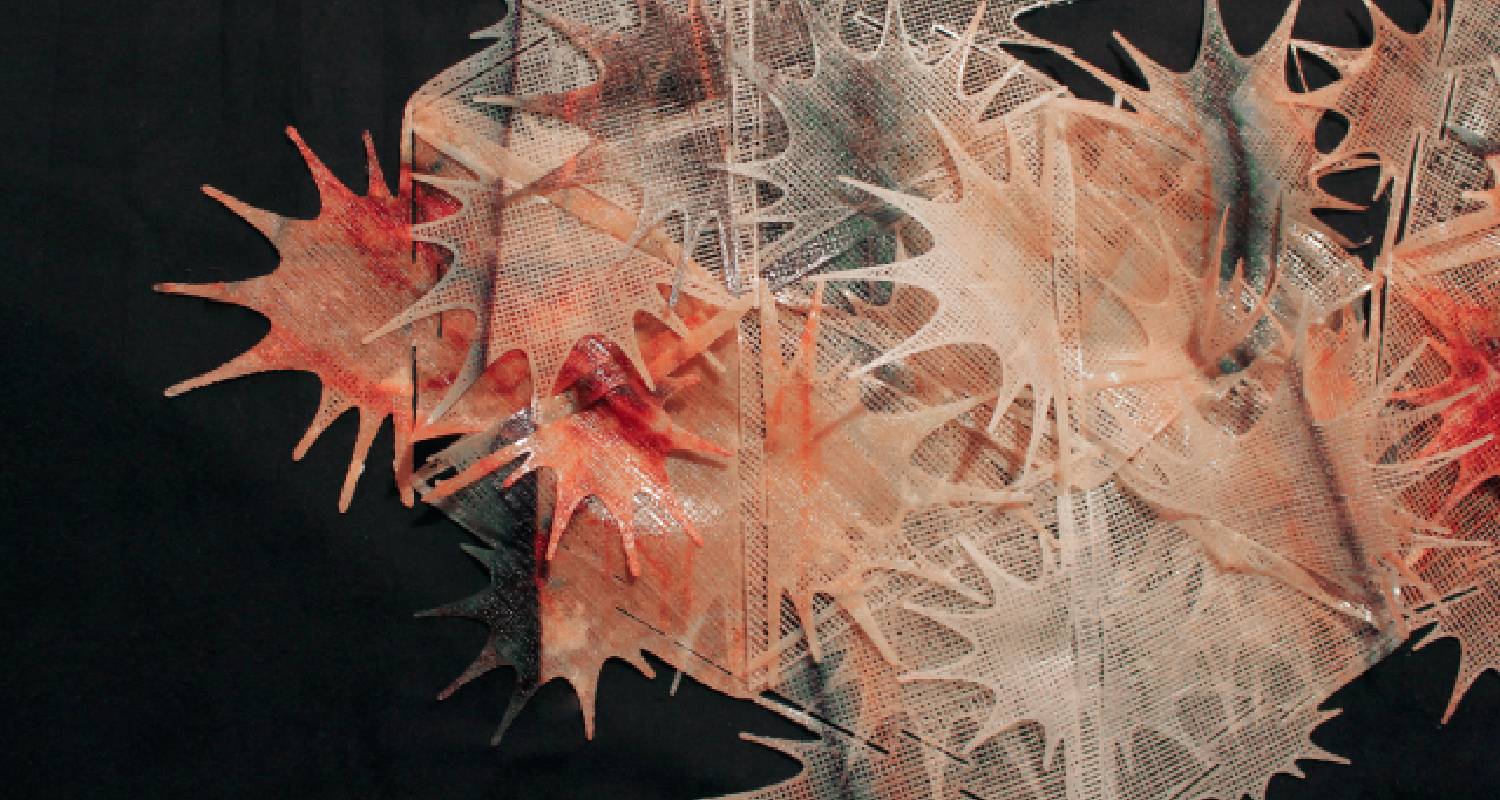
Image above: Detail of the fabric pieces printed for the 'Spiky' dress with transparent Filaflex 82A. To give the multicolor gradient touch, the sublimation technique has been used.


Images above: The work-in-process puzzle of which fabric piece goes where to complete the ‘spiky’ dress. On the left, the sublimation paper with the 3D printed textile still attached – how the modules come off the printer. On the right, the cleaned 3D prints lay in the correct position ready to be woven into a dress.



Images above: Finished 'Spiky' dress.
How did you discover our Filaflex filaments?
My bachelor, Industrial Design at the TU/e, let us choose which ‘space’ we wanted to work in. At each opportunity I got, my projects would be in ‘Wearable Senses’, where people would embroider with conductive wires and create kombucha shirts and other laser cut or electronic contraptions. One of the PhD students there was working on using body data to mass customise 3D printed shoes - Troy Nachtigall had his printers in the lab and was kind enough not only to teach us how to use them but also to give us the freedom to experiment. The filament that he had chosen for his shoes was Filaflex, and after giving it a try for textiles I have been using it since.
What are your favorite materials to print with?
The transparent Filaflex 82A is my all-time favourite. I’ve yet to figure out how to consistently print well with the Filaflex 70 & Filaflex 60A filaments, and the 82A is flexible enough for most textile projects as well as reliably high quality. Personally, I love the transparent & clear filaments, since they have a shimmer that makes the 3D-printed textile look like organza or lace. And on top of that in combination with sublimation or heat transfer vinyl, you can create any colour your project needs.






Images above: 3D printed tote bag with Filaflex 82A clear blue. This design is a combination of square and circle modules, inspired by laser cutted modular fashion, which are printed separately and then assembled to create the final design.
How important is the material for creating your projects?
The material is all important! Most of my garments are modular, meaning the pieces are fully 3D printed and woven together after. This gives the added benefit of ease of repair and recycling at the end of the garment’s life! The challenge is to manipulate the structure of these mono materials in such a way that it creates different material properties in different parts of the design. What I mean by that is; would it be possible to print a zipper with the same material as the textile itself?



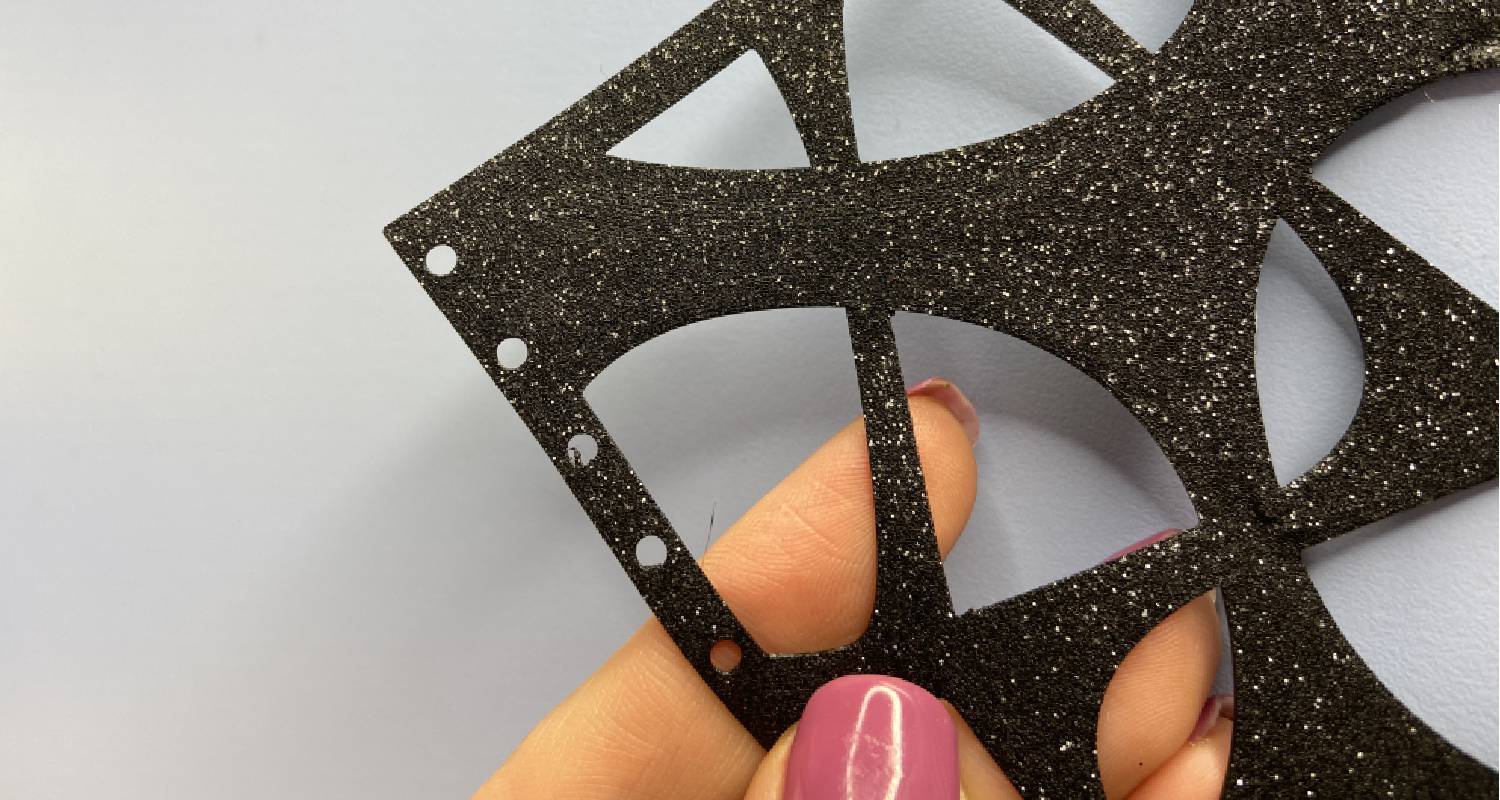
Images above: Details of Brigitte's 3d printed garments where we can appreciate the concept of 'monomaterials' to which she alludes, such as the back strap or clasp of the red bra and the corset/belt. All garments include the clasp or the necessary elements integrated into the design and printed with the same material.
Which printer do you print with?
At the moment I have two Artillery Sidewinder x2 3D printers. I picked this printer since the print area is big (30x30cm) for the price and the printer works well with flexible filaments. Additionally, I'm saving up for a belt 3D printer (imagine the dresses!) and I have a DIY clay 3D printer waiting to be built.
When you say 'My dream is to create a system of bespoke clothing that can be 3D-printed with biodegradable materials', how important is it to you that they are biodegradable and what exactly do you mean by that?
In order to avoid catastrophic climate change, we need to adapt how we produce and use the objects around us. The fashion industry is the second most polluting industry, which means there is much room for improvement. Personally, I would like to see how ‘regenerative design’ could apply to fashion and help us go beyond sustainability. Broadly speaking I think that the changes which need to be made are twofold: one is a mindset change about our system (circularity is an example of this), and the second is a shift away from our dependency on fossil fuel (non-replenishable) materials. It’s fascinating to think about opportunities, for example about how our clothing could clean the air whilst we wear it or the remains of a worn out garment could nourish the soil and help local biodiversity to flourish. Side note: for anyone interested in this topic I’d highly recommend reading Regenerative Cultures by Daniel Wahl 2016. Most innovation is incremental, so until a biodegradable material is created we should continue to experiment as much as possible with the materials that are available now. This will bring 3D printed fashion design to the next level and likely with it 3D printers will become more fit for purpose. On top of that, the requirements for 3D printer filament will adapt as our understanding of 3D printed textiles deepens. In summary, for me working with a biodegradable material is incredibly important but there is more to 3D printing than the material used, so I think it’s important to keep evolving and not stop creation in the mean time.
What will be your next steps?
Since the prices have dropped enough for anyone to own a 3D printer at home with VARIABLE SEAMS I aim to 3D model an entire wardrobe of 'slow' and customised fashion, from jewellery to underwear for you to 3D print and wear! The aim for the end of 2024 is to finish a capsule wardrobe. My patrons get to vote on what is included, so join the club if you’re interested. Most of the individual 3D models will be added to Cults if you want to print your own version :)
Is there anything else you would like to add?
Many thanks for the interview. I hope Recreus keeps innovating, so keep doing what you’re doing; the PLA Purifier filament is fascinating. For selfish reasons, I hope you’ll keep expanding the TPU collection! ;)
@paraprint.io Antwoorden op @Karol Levinsk , since the chain is made of small modules, you can make de design any length you like. ? #3dprintinglife #3dprintingfashion #3dprinttok #modularfashion #subliprint ♬ Fire for You - Cannons
Ver esta publicación en InstagramUna publicación compartida de Brigitte | 3D-printed Fashion Expert (@paraprint.io)
Videos above: Brigitte shows the process of the sublimation technique on her social media.
For more information about Brigitte's designs and the download of these files, please consult:
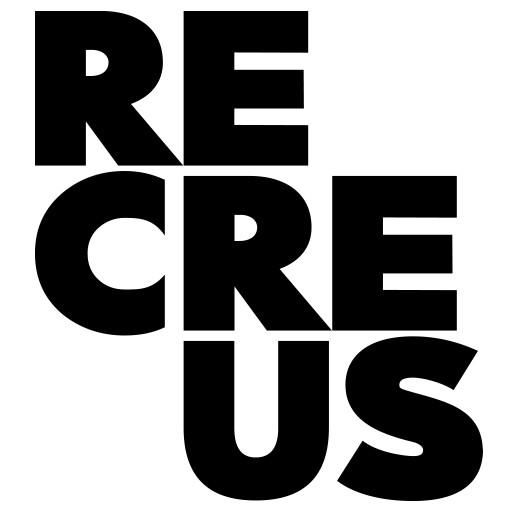
 it
it  es
es en
en fr
fr de
de